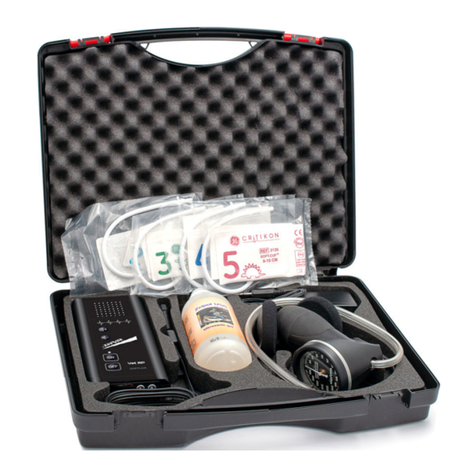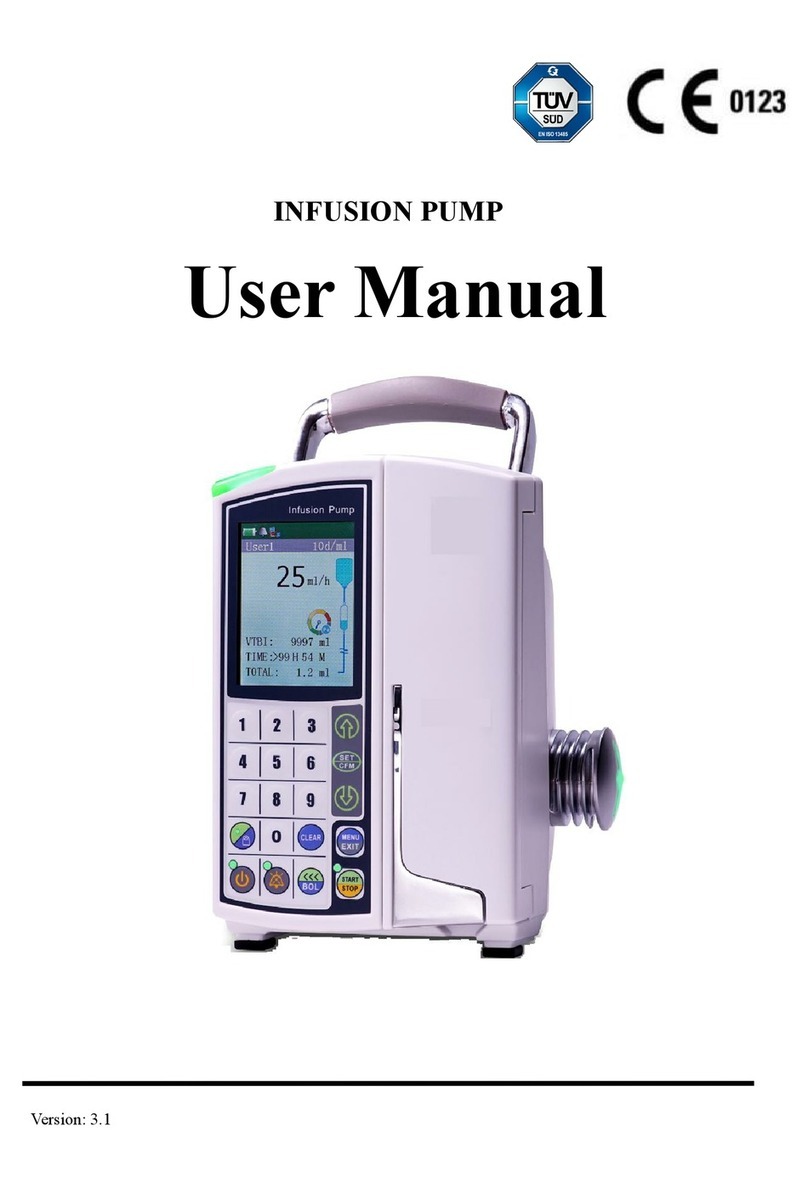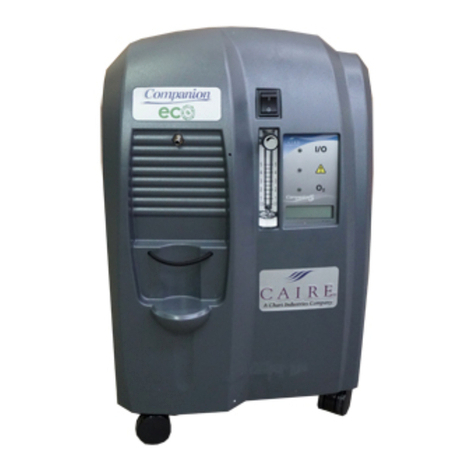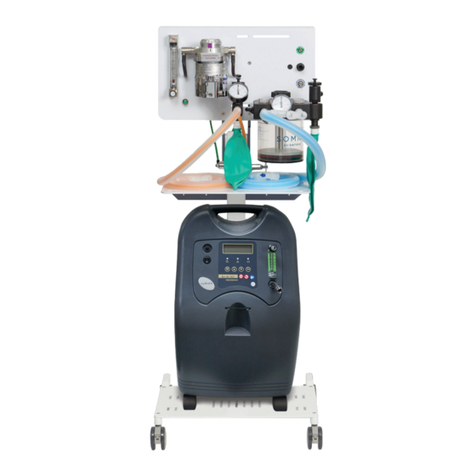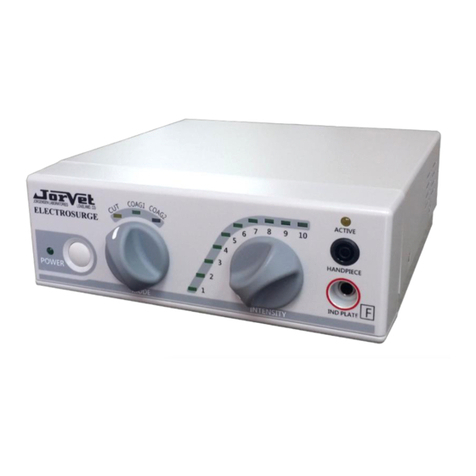The monitor acts on changes in temperature. This occurs when
the animal exhales warm air and inhales the cooler room air over
the sensor. The greater the temperature difference, the smaller the
amount of air volume that is needed to trigger the monitor. But if
there is too large a difference in temperature, another problem
occurs. The animal’s breath is approximately 100 degrees
Fahrenheit, so a temperature difference implies that the room air
temperature must be lower. Cold room air can also make the sensor
adapter cooler. The exhaled air must pass through the plastic
adapter which will cool the breath down. So now we have lost some
of the desirable temperature difference that we need to sense small
breath volumes. The cooler the sensor adapter, the less temperature
change and more air it takes to produce the same signal to the
monitor.
The opposite can also happen when the sensor adapter is heat-
ed by, say, a warm overhead light. The adapter warms the incoming
room air, reducing the temperature difference.
What can be done about this dilemma? In cold weather when
the sensor adapter is also cold, warm the adapter up with your hand
before, depending on the monitor to respond to small breaths. If the
monitor has been working for a time and quits responding to obvi-
ous breathing, then the sensor adapter is probably too warm. Cool
it down until it is responding again. Then insulate the sensor with a
small towel or other insulating material. One way of cooling the
adapter would be to wrap it in a towel saturated with cool water.
REPLACEMENT PART CATALOG NUMBERS
J-166md#1A Sensor cable complete with connector.
J-166md #2 Rechargeable battery.
J-166md#3 AC adapter/recharger.
J-166md#4 Mounting Bracket
J-166md#6A Double-ended 15 mm connector with side
Luer fitting.
J-166md#7 Black case screw only for mounting bracket.
J-166md#9A Endo-tube connector package.
(3.5 mm to 5 mm)
WARRANTY STATEMENT
This product has a limited warranty to the original purchaser (end-
user) for a period of 1 (one) year from the original purchase date.
THIS WARRANTY IS LIMITED TO DEFECTIVE MATERIALS
AND WORKMANSHIP. The warranty is voided by unauthorized
adjustment or repairs, physical abuse, inappropriate use, or neglect.
In no event shall Jorgensen Laboratories, Inc. be responsible or
liable for any damages arising from the use of this instrument.
Note: Sensor cables for earlier monitors will not work properly with
this design. Use only the sensor mounted in a luer fitting, J-
166md#1A. This model has a black colored rear panel where
previous models of the monitor are white.






